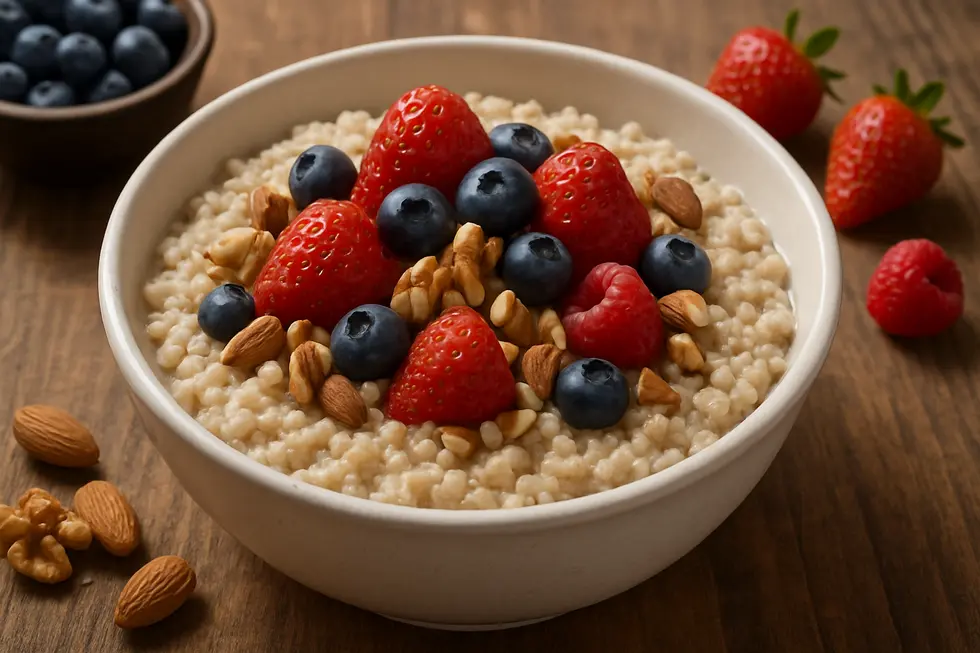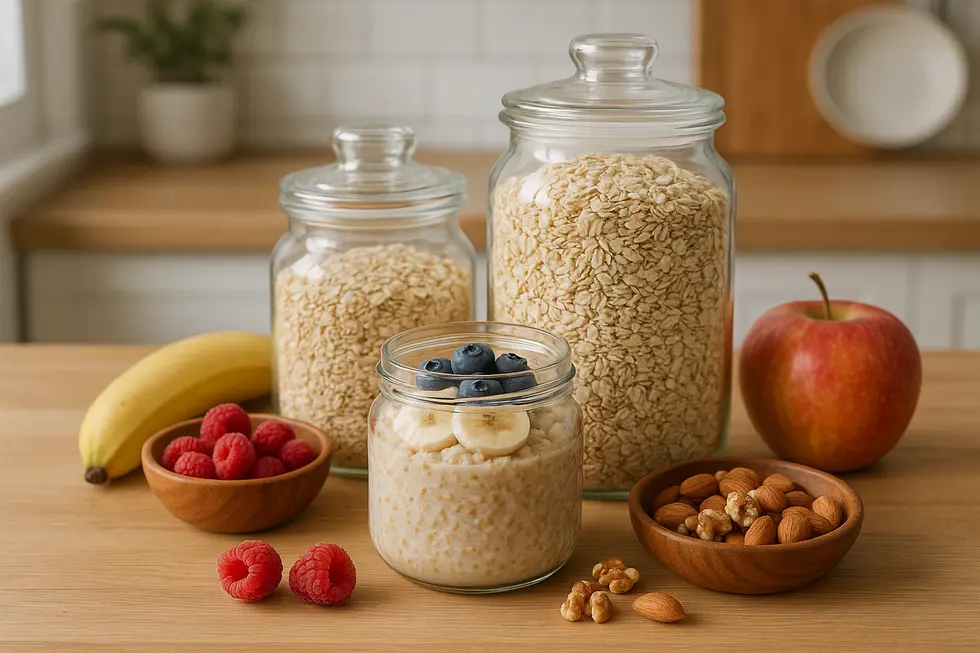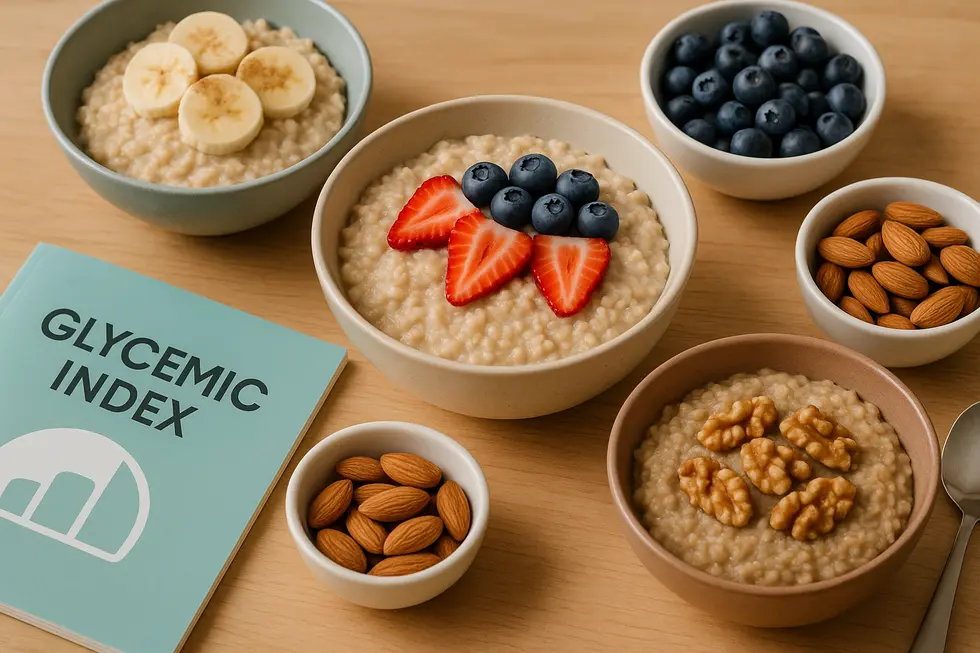Oatmeal, with its rich fiber content and versatile nature, stands as a staple breakfast choice for many. For those managing diabetes or conscious of their health, choosing oatmeal with a low glycemic index (GI) offers an even greater advantage. The GI is crucial in understanding how foods affect blood sugar levels. Oatmeal’s slower digestion rate helps maintain steadier glucose levels. In our exploration, we’ll delve into the nutritional benefits of low glycemic oatmeal and guide you in selecting the right type for your diet to harness its full potential.
Harnessing the Power of Oats: The Nutritional Edge of Low Glycemic Oatmeal

Low glycemic oatmeal is a powerhouse of nutrition, offering numerous health benefits that make it an ideal choice for those looking to manage their blood sugar and optimize their overall well-being. At the heart of oatmeal’s appeal is its moderate glycemic index (GI), which plays a crucial role in maintaining stable blood sugar levels. These levels are particularly important for individuals with diabetes or those simply aiming for sustained energy throughout the day. With a GI of approximately 55, oatmeal provides a slow release of glucose into the bloodstream, thereby reducing the risk of sudden sugar spikes and energy crashes.
One of the standout features of oatmeal is its high content of soluble fiber, and more specifically, beta-glucans. These are known not just for their ability to help lower cholesterol levels, a boon for cardiovascular health, but also for their impact on keeping hunger at bay. Fiber in oatmeal provides a longer-lasting feeling of fullness, which can be incredibly beneficial for weight management. This feeling of satiety is linked to a reduction in overall calorie intake, aiding those who are looking to manage their weight effectively. The fiber-rich composition of oatmeal also promotes a healthy digestive system, supporting a flourishing gut microbiome, essential for overall digestive health.
In the realm of blood sugar control, oatmeal emerges as a robust ally. Its complex carbohydrates ensure a steady stream of energy, which not only supports physical endurance but also mental focus throughout the day. In stark contrast to high glycemic index foods that result in abrupt rises in blood sugar, low GI foods like oatmeal offer a balanced approach to blood sugar management, a principle detailed further on sites like Glycemic Index Guide. For individuals managing diabetes, incorporating oatmeal into their diet can be a strategic move, as it helps maintain glucose levels within a steady range.
Beyond its immediate benefits for blood sugar control and weight management, oatmeal is a champion for heart health. The beta-glucans present in oats have been extensively researched and shown to effectively reduce LDL cholesterol when consumed regularly in amounts of about three grams per day. This reduction in cholesterol levels consequently lowers the risk of developing coronary heart diseases, underscoring the multifaceted benefits of integrating oatmeal into daily meals. It’s not just about keeping the heart ticking well; it’s about promoting an overall healthier lifestyle by making heart-friendly dietary choices.
While oatmeal in its less processed forms, such as steel-cut or whole rolled oats, offers the best glycemic advantages, it can be further enhanced by pairing it with other low glycemic foods. Incorporating a variety of low GI fruits or nuts not only complements the nutritional profile of oatmeal with added vitamins and proteins but also enriches the taste, making each meal both healthful and enjoyable. This synergy of nutrient-dense foods maximizes the benefits of oatmeal, taking a simple bowl of oats to new heights of nutritional excellence.
For those wondering about gluten sensitivity, it’s reassuring to know that oats are naturally gluten-free. However, cross-contamination can occur in processing facilities where oats are handled alongside gluten-containing grains. Therefore, opting for certified gluten-free oats ensures those with celiac disease or gluten intolerance can safely enjoy its benefits without compromising on health.
In conclusion, incorporating low glycemic oatmeal into your daily diet can be a game-changer in terms of long-term health benefits. From blood sugar management and weight control to heart health and digestive wellness, oatmeal offers a diverse array of advantages. The versatility of oatmeal in pairing with other low glycemic foods amplifies its already significant health benefits, making it a cornerstone of a nutritionally balanced diet. The power of oats is truly harnessed when one understands and utilizes their full potential for enhancing health and well-being.
Mastering the Art of Low Glycemic Oatmeal Selection and Consumption

When it comes to starting your day on the right note with a breakfast that fuels both body and mind, oatmeal often emerges as a beloved choice. Its ability to help manage blood sugar levels while offering a wide array of health benefits makes it a staple in many households. However, to truly harness these benefits, one must understand the nuances of selecting and consuming oatmeal with a low glycemic index (GI).
The glycemic index is a critical concept to grasp if you’re looking to manage your blood sugar levels effectively. It measures the rate at which foods elevate blood sugar, with numbers ranging from 1 to 100. Foods scoring between 1 and 55 are considered low GI, meaning they release sugar gradually into the bloodstream—a key factor in maintaining stable glucose levels. In contrast, moderate GI foods score between 56 and 69, while anything above 70 is classified as high GI. Oatmeal generally occupies the low to medium GI spectrum, making it an excellent option for those needful of a steady release of energy.
Not all oatmeal is created equal in terms of processing and glycemic impact. The level of processing that oats undergo significantly affects their glycemic index. Steel-cut oats, which are the least processed, boast the lowest GI among oatmeal variants. Their inherent fiber and structural integrity slow digestion, leading to a more gradual blood sugar increase. Rolled oats, while slightly more processed, still maintain much of their fiber content and provide a moderate GI. However, the convenience of instant oatmeal comes with a higher glycemic price. The significant processing involved results in quicker digestion and absorption, causing a more pronounced spike in blood sugar levels [^1^]. Therefore, when aiming for a low glycemic breakfast, reaching for steel-cut or whole rolled oats is wise.
The health advantages of consuming low glycemic oatmeal extend beyond blood sugar management. It plays a crucial role in enhancing metabolic health, thanks to the presence of beta-glucan, a specific type of soluble fiber. Beta-glucan aids in improving insulin sensitivity, a critical factor for reducing the risk of type 2 diabetes. Additionally, by binding to cholesterol-rich bile acids, beta-glucan helps to lower LDL (bad) cholesterol levels. Lower cholesterol, in turn, mitigates the risk of heart disease, further cementing oatmeal’s status as a heart-healthy food option.
Fiber, the unsung hero of oatmeal, not only contributes to its low GI rating but also assists in weight management. A high-fiber diet increases satiety, which aids in controlling caloric intake by keeping you fuller for longer. This property makes oatmeal an appealing option for those looking to create a caloric deficit without feeling deprived. The fiber content also stabilizes energy levels throughout the day, preventing the energy crashes commonly associated with high GI foods.
To maximize the benefits of oatmeal, it is beneficial to pair it with other low glycemic foods. Incorporating toppings like nuts, seeds, or low glycemic fruits can provide added nutrients without significantly impacting the meal’s glycemic load. Avoiding high sugar and high-fat additions further preserves its blood sugar-regulating properties. For individuals with gluten intolerance, it’s prudent to ensure that the oats chosen are certified gluten-free, maintaining the integrity of a dietetic regime without compromising on quality or health benefits.
In conclusion, understanding the glycemic properties of oatmeal and carefully selecting the least processed forms can make a significant difference in managing your blood sugar levels. Oatmeal’s array of health benefits, from reducing the risk of diabetes and heart disease to supporting weight management, makes it an invaluable part of a balanced diet. When coupled with the right accompaniments, it stands as a powerful ally in the quest for optimal health. For more in-depth insights into the benefits of low glycemic oatmeal, check out this comprehensive guide. By mastering the art of selecting and consuming the right type of oatmeal, you unlock a wealth of health benefits while savoring a delicious and nutritious meal each morning.
[^1^]: Zoe – The Truth About Oatmeal
Final thoughts
Embracing low glycemic oatmeal in your diet not only aids in steadying blood sugar levels but also supports overall health through its high fiber content. By opting for less processed oats, such as steel-cut and whole rolled oats, you can maximize these benefits. Pairing oats with low GI foods will further enhance your dietary regime. With this knowledge, make informed choices to support your well-being and manage glucose effectively.
Don’t just read about better health—live it. Download the Glycemic Index Guide Tracker today to start making smarter food choices, track your glucose, and stay on top of your nutrition—all in one app.
About us
Glycemic Index Guide Tracker is a powerful yet easy-to-use mobile app designed to help you make informed dietary choices by tracking the glycemic index (GI) and glycemic load (GL) of the foods you eat. Whether you’re managing diabetes, following a low-carb or keto diet, or simply aiming to maintain steady energy and better health, the app offers a comprehensive food database, nutrition and glucose tracking tools, weight monitoring, and curated low-GI recipes—all in one intuitive interface. It’s your go-to companion for understanding how different foods affect your blood sugar and for building smarter eating habits.


Leave a Reply